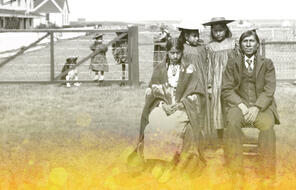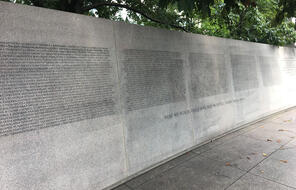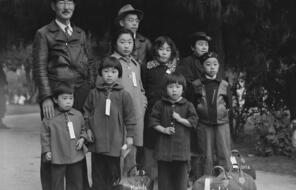Can There Be Justice Without Truth?
For many survivors, the most difficult issue in moving toward healing has been revealing the pain they endured at the residential schools. For them, reconciliation without truth was not possible. As Garnet Angeconeb, elder, residential school survivor, and journalist, puts it, “truth and understanding are two key ingredients that will lead to healing and reconciliation.” 1
Peter Irniq was born in 1947 in Naujaat/Repulse Bay, in the area now called Nunavut, in the Arctic. In 1958, after the government decided to take on the education of the Inuit , Irniq entered Sir Joseph Bernier Federal Day School in Chesterfield Inlet. Between 1963 and 1964, he attended Sir John Franklin School in Yellowknife and, later, was sent to learn “southern” trades in the Churchill Vocational Centre in Manitoba. Irniq later became a teacher, activist, and political leader responsible for the introduction of Inuit language and cultural programs into northern schools. In the excerpt below, Irniq discusses why he thinks it is important to uncover the truth behind the experience of indigenous students in the residential schools.
When I was a young man . . . I became very shy of my own culture. I became very embarrassed about my own culture because that’s how we were brought up to be by the Canadian Government colonialism in our communities. We were always laughed at because we lived in igloos. We were laughed at because we dressed in Caribou clothing and because Inuit traditionally kiss by kissing with your noses. That’s how the society knew us at that time and they made fun out of these things. . . . I have always maintained that southern Canadians have a right to know what we went through at the Residential School. Health care givers have a right to know what we went through at the Residential Schools. You see, with the Residential School my generation of Inuit went through quite a lot. We were sexually abused. We were physically abused. We were mentally abused.
Canadians should be asking more about what happened to us at various Residential Schools throughout Canada. That’s what they should be asking. They should be taking more interest about these Inuit who moved from an igloo to the microwaves in less that forty-five years, so that’s what they should be asking more about us, about the experiences of Residential Schools, the legacy of Indian and Inuit Residential Schools in Canada.
I have told my fellow Inuit in the last couple of years that they should speak out; they should speak out more about their experiences at the Residential School. This will form part of the history, Canadian history, particularly the Inuit. It’s something even though that we were abused by the members of the Church at that time, we don’t hold grudges against the people who did these things to us. It embarrassed us. It embarrassed me . . . But the abuses—We want to make sure that these kinds of things never happen to young people again, little children, in the future. We don’t hold grudges against those people, but we want to make sure that these things never happen to young people again, little children, never again. Never! 2
Connection Questions
- A report from the organization Human Rights Watch on the need for truth and reconciliation said this about South Africa: “If a country is to come to terms with its past and successfully turn its attention to the future, it is essential that the truth of the past be officially established. It is impossible to expect ‘reconciliation’ if part of the population refuses to accept that anything was ever wrong, and the other part has never received any acknowledgment of the suffering it has undergone or of the ultimate responsibility for that suffering.” 3 Why do you think the report emphasizes that a society seeking to move forward must first establish the truth about the past? What do you think is the relationship between truth and justice?
- For many years, Peter Irniq felt embarrassed by his Inuit language and culture. What did he do to “take his culture back”?
- Irniq also strongly believes that Canadians have a “right to know” the truth about the schools. As you read his reflection, what do you think Irniq believes Canadians will know from learning about the residential schools? How might that knowledge impact the future?
- How important is it that citizens know the truth about their nation’s past? Why might some people resist efforts to uncover difficult histories?
- 1Garnet Angeconeb, “Speaking My Truth: The Journey to Reconciliation,” in Speaking My Truth: Reflections on Reconciliation & Residential Schools, available at the Speaking My Truth website. Reproduced by permission of Aboriginal Healing Foundation.
- InuitInuit: The term Inuit refers broadly to the indigenous population of Alaska, Canada, and Greenland. Inuit means “people,” and the language they speak in the Canadian Arctic is called Inuktitut. For centuries, these communities have relied on their natural resources, strong leaders, and innovative tools and skills to survive in the Arctic north. Today, the Inuit communities of Canada live in the Inuit Nunangat, the Inuit homeland, and the region is divided into four territories.
- Day SchoolDay School: Alongside residential schools and industrial schools, day schools were part of the residential school system for indigenous children in Canada. Often located on the reserves, these schools served about two-thirds of indigenous students throughout the history of the system. They were operated by both municipal authorities and the churches, and they attempted to reach the same goals as the Indian Residential Schools: Christianization and assimilation. Many of the troubles and abuses found in the residential schools were also found in the day schools.
- indigenousindigenous: A generic term for communities of people who resided on territories before they were invaded and/or colonized (primarily by Europeans). Many descendants of these communities have a historical and cultural continuity with their pre-colonial ancestors. For some, the term indigenous is preferable to Aboriginal in reference to the First Nations, Métis, and Inuit in Canada.
- 2“Peter Irniq,” We Were So Far Away: The Inuit Experience of Residential Schools, Legacy of Hope Foundation website. Reproduced by permission of Legacy Hope Foundation.
- 3Letter to President de Klerk in Accounting for the Past: The Lessons for South Africa from Latin America, Human Rights Watch website. Quoted in Brian Rice and Anna Snyder, “Reconciliation in the Context of a Settler Society,” in Speaking My Truth. Reproduced by permission of Aboriginal Healing Foundation.
How to Cite This Reading
Facing History & Ourselves, "Can There Be Justice Without Truth?," last updated September 20, 2019.















